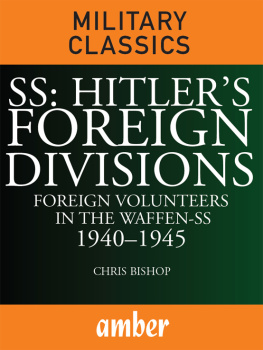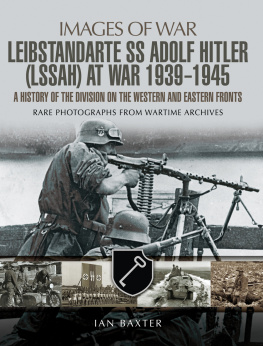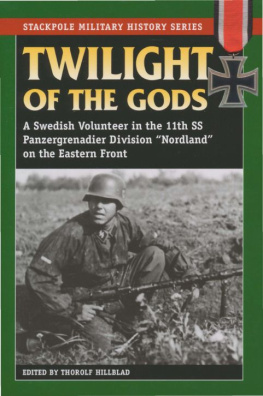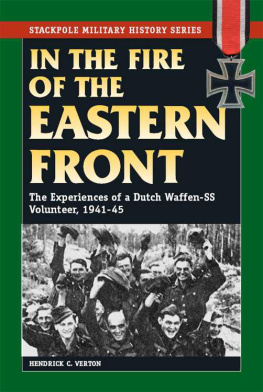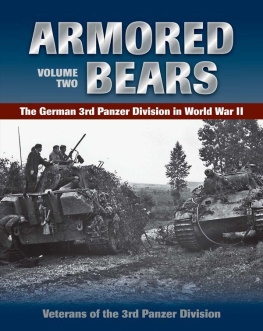

Copyright 2002 Amber Books Ltd
All rights reserved. With the exception of quoting brief passages for the purpose of review no part of this publication may be reproduced without prior written permission from the Publisher. The information in this book is true and complete to the best of our knowledge. All recommendations are made without any guarantee on the part of the author or publisher, who also disclaim any liability incurred in connection with the use of this data or specific details.
We recognize that some words, model names and designations, for example, mentioned herein are the property of the trademark holder. We use them for identification purposes only. This is not an official publication.
ISBN 1-932033-04-1
Digital ISBN 978-1-907446-86-3
Editorial and design by
Amber Books Ltd
Bradleys Close
7477 White Lion Street
London N1 9PF
Project Editor: Charles Catton
Editor: David Norman
Design: Mike Rose
Picture Research: Chris Bishop and Lisa Wren
Printed in Italy
Extracts from the interviews with Ornulf Bjornstad and Olaf Lindvig, former members of SS Wiking, are reproduced with the permission of the Sound Archives of the Imperial War Museum, London.
Picture credits
AKG London: 1011, 62, 121, 128, 140, 154155, 156157, 158159. Ian Baxter (History in the Making): 116. PO P P E R F O T O: 183. Private Collection: 6. Suddeutscher Verlag: 14, 15, 24, 25, 57, 89, 90, 95, 98, 110, 111, 135, 147, 151, 166, 169. TRH Pictures: 1, 89, 12, 16, 18, 19, 20, 21, 22, 26, 27, 28, 29, 30, 31, 3233, 3435, 36, 37, 38, 4041, 42, 43, 44, 45, 4647, 4849, 52, 55, 56, 5859, 6061, 63, 64, 65, 66, 67, 6869, 70, 71, 73, 74, 77, 78, 8081, 82, 83, 85, 8687, 88, 9091, 92, 93, 94, 96, 100101, 103, 104, 106, 107, 108, 109, 112, 113, 114, 117, 119, 120, 122123, 124125, 126127, 130, 131, 132133, 134, 136, 138, 141, 142143, 144, 148149, 150, 152153, 160, 162163, 164165, 168, 171, 173, 174175, 176, 177, 178, 180, 181.
Maps by Peter Harper
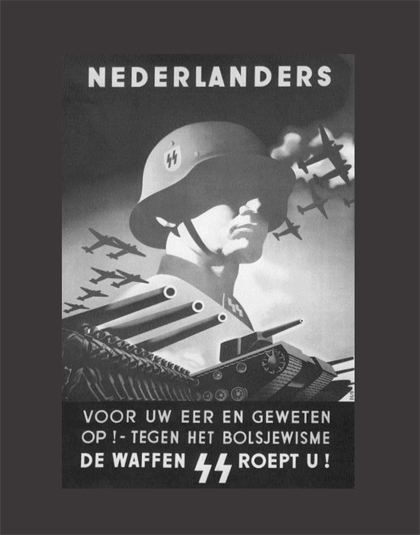
Soon after the German conquest of Denmark, Norway, Belgium and the Netherlands, appeals went out for foreign recruits to join the Waffen-SS in the fight against Bolshevism. This is a Dutch recruiting poster.
CHAPTER ONE
F OUNDATION
Faced with a severe manpower shortage, the Waffen-SS sought volunteers from countries occupied by the Germans, including men from the Netherlands, France, Denmark and Norway, to form the future Wiking Division, a title intended to embody the ideal of Nordic racial purity.
Allegations of collaboration in World War II can still act as raw nerves on the conscience of nations. Palatable or not, the truth is that thousands of willing youngsters from subjugated countries served Nazi Germany in the various echelons of the Waffen-SS (Armed SS). At the outbreak of war, figures were negligible. By its end, foreigners outnumbered native Germans in its ranks. There were many young men who, disillusioned by the helplessness of their governments in the face of defeat, were driven to seek a focus for their lives which they saw as being without purpose.
SS-Obergruppenfhrer (General) Felix Steiner, who became the first commander of the Waffen-SS Division Wiking , wrote that all these psychological factors and their concern about the future destiny of their homelands combined at this time to lead a part of the youth to make the decision to enter the German Wehrmacht as volunteers. Of the men themselves, he added: They observed the good behaviour and discipline of the German troops and began to make comparisons that did not turn out to be unfavourable for the Germans. At the immediate post-war Nuremberg trials, a Herr Brill, a former SS-Mann (pre-war rank of private) in the Leibstandarte, who later served in the Erganzungs Amt which enrolled Waffen-SS recruits, stated:
In my office, I read thousands upon thousands of applications for admission. I can say that up to 1939 the enthusiasm for the SS, for its decent and proper conduct, was the main reason for volunteering. The men wanted to do their military service in a clean, modern, lite formation.
G LITTERING P ROMISES
But this told only half the story. The truth was that at a material level, the benefits of working for the SS were often tangible. Pay and allotments for foreigners were comparable with that of the Germans. There were attractive inducements to look to the future once the war had been won, glittering promises of civil service preferment and grants of land. These were motives enough, but there were also those who had an ideological commitment to National Socialism which they felt could best be expressed through service in the SS.
From the German viewpoint, there was a strictly practical reason in planning for a rapid expanse of Waffen-SS manpower from outside the Reich . There was a severe shortage of personnel due to the Wehrmacht s niggardly release of native German volunteers whom it had recruited and wished to retain for itself. As World War II grew ever nearer, the SS was compelled to look elsewhere for the personnel to man new field divisions. Whatever the reasons, the courtship of the youth of occupied countries worked well. Heinrich Himmler had every reason to be a wholly satisfied individual. In an address to senior officers at Posen on 4 October 1943, the Reichsfhrer-SS was justified in describing his Waffen-SS expansion as nothing less than fantastic, achieved at an absolutely terrific speed.
The figures, Himmler declared, spoke for themselves. In 1939, the Waffen- SS had consisted solely of a few regiments, guard units, 8000 to 9000 strongthat is, not even a division; all in all, 25,000 to 28,000 men at the most. World War II had scarcely been a year old before that strength had reached nearly 150,000. With a six-fold increase in manpower, the Waffen-SS was now established as the fourth branch of the Wehrmacht .
R APID B UILD -U P
By 1940, the SS stood at four divisions. This history is concerned with SS-Wiking Division, the 5th Division, whose personnel during the war comprised not only German nationals but also those of Flemish, Dutch, Danish, Norwegian and Finnish origin.
At first, these divisions had been little more than scattered battalions of the SS-Verfgungstruppen (General Purpose Troops), or SS-VT, which was later renamed the Waffen-SS . Then followed their conversion into regiments, one of which was Germania , a future component of the division SS-Wiking . The breakdown of the west European or Germanic SS, many of whom swelled the ranks of Wiking, is given by George H. Stein in his book Waffen-SS, as follows:
some 50,000 Dutch (making up the largest group); 40,000 SS men being provided by Belgium, almost evenly divided between Flemings and Walloons; 20,000 from France with Denmark and Norway each producing around 6000 men. Another 1200 came from such countries as Switzerland, Sweden and Luxembourg. The figure of those serving from Finland, the least committed of the Waffen-SS , has been put at 1000, but various accounts differ.


